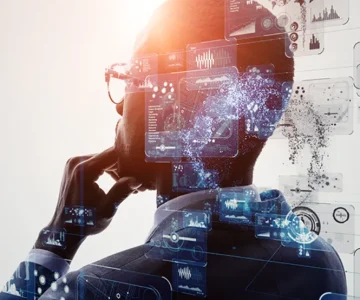Artificial Intelligence (AI) is revolutionizing industries across the globe, reshaping the way businesses operate, and driving technological advancements. From personalized experiences to autonomous systems, AI’s influence is becoming undeniable. But just how big is this transformation, and how fast is it happening? In this post, we dive into key AI statistics to explore its rapid growth, impact on various sectors, and what the future holds.
The Booming AI Market
The global AI market is expanding at a remarkable pace, with its current valuation surpassing $196 billion. This growth is set to continue, with experts predicting the market will reach a massive $1.8 trillion by 2030. Several factors contribute to this growth:
- Increased Investment: Both public and private sectors are investing heavily in AI, fueling innovation and accelerating technological development.
- Real-world Applications: AI is solving real-world problems across various industries, from logistics optimization to personalized healthcare. This has increased demand and justified further investments.
- Emerging Technologies: Innovations in machine learning and natural language processing are pushing the boundaries of AI capabilities, opening up new opportunities and driving the market forward.
AI’s Impact on Industries
AI is not just a concept anymore—it’s actively transforming industries. Here’s a closer look at how AI is making a difference:
- Retail: AI is enhancing the customer shopping experience through personalization, optimizing inventory management, and automating customer service tasks, leading to better customer satisfaction and sales growth.
- Manufacturing: AI-powered robots are improving production lines, enhancing quality control, and predicting equipment failures, resulting in higher productivity and less downtime.
- Finance: AI is being used to automate fraud detection, tailor personalized financial products, and manage investment portfolios, which could potentially improve returns and financial outcomes for consumers and businesses alike.
AI and the Workforce
While AI raises concerns about job displacement, it’s also creating new opportunities. By 2025, it’s projected that nearly 97 million people will be employed in AI-related jobs, ranging from system development to real-world application deployment. The shift in the workforce will focus more on creativity, problem-solving, and human interaction. To keep up, companies and workers will need to embrace upskilling and reskilling initiatives.
The Ethics of AI
The rise of AI also brings about ethical concerns. Bias in AI models can lead to discriminatory outcomes, and there’s the potential for autonomous systems to be misused. It’s crucial for companies to develop ethical frameworks for AI development and deployment, ensuring transparency and accountability in AI systems to mitigate risks and ensure that AI serves the greater good.
Breaking Down Key AI Statistics
While AI statistics offer a broad view of its rise, it’s important to understand their complexities. Let’s break down some key insights:
- Job Shifts: The promise of 97 million AI jobs by 2025 is promising, but it’s essential to understand the nature of the jobs being replaced and those being created. Low-skill, repetitive tasks are most at risk, while new AI jobs will likely require higher education and technical expertise.
- Investment Imbalance: While countries like the US and China are investing heavily in AI, there is a growing technological divide. To keep pace, international collaboration is key to ensuring equitable access to AI’s benefits.
- Accuracy and Bias: AI models are often praised for their accuracy, but this is highly dependent on the quality of training data. Bias in datasets can lead to skewed results, which is particularly concerning in areas like facial recognition.
- AI Transparency: Many AI systems, especially those based on deep learning, are complex and difficult to understand, which raises issues about accountability. Efforts are underway to develop more transparent AI systems that allow users to understand how decisions are made.
Global AI Landscape
The adoption of AI is happening worldwide, with key players in different regions shaping the future of AI development:
- United States: The US remains at the forefront of AI research and development, driven by large tech companies, academic institutions, and substantial government investments. However, issues like data privacy and ethics are gaining attention.
- China: With its focus on technologies like facial recognition and robotics, China is investing heavily in AI. However, concerns over intellectual property and human rights must also be addressed.
- European Union: The EU is taking a human-centric approach to AI, emphasizing ethics and data privacy through regulations like the GDPR. This model aims to ensure AI is developed responsibly and benefits society at large.
- Emerging Markets: Countries like India and Brazil are making strides in AI, focusing on practical applications in sectors like agriculture and healthcare. These nations are expected to play a growing role in the AI landscape.
Conclusion: The Future of AI
AI is transforming industries, creating new job opportunities, and reshaping the way businesses operate. The future of AI will require careful governance to ensure ethical development and deployment. As AI continues to evolve, organizations will need to prioritize responsible AI practices while harnessing its potential to drive innovation and growth. With the right approach, AI can create a more efficient, fair, and sustainable future for all.





